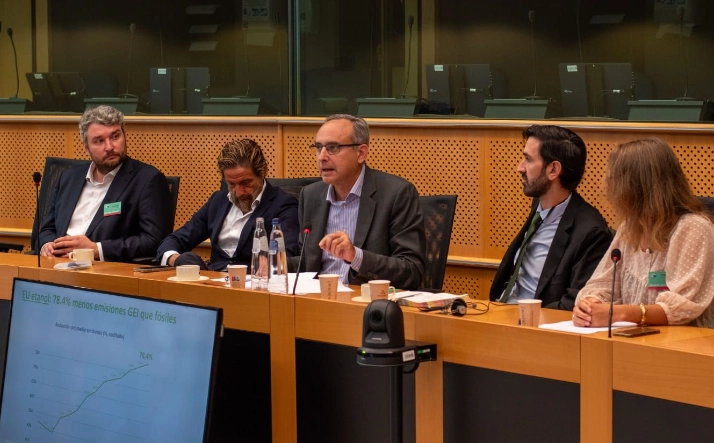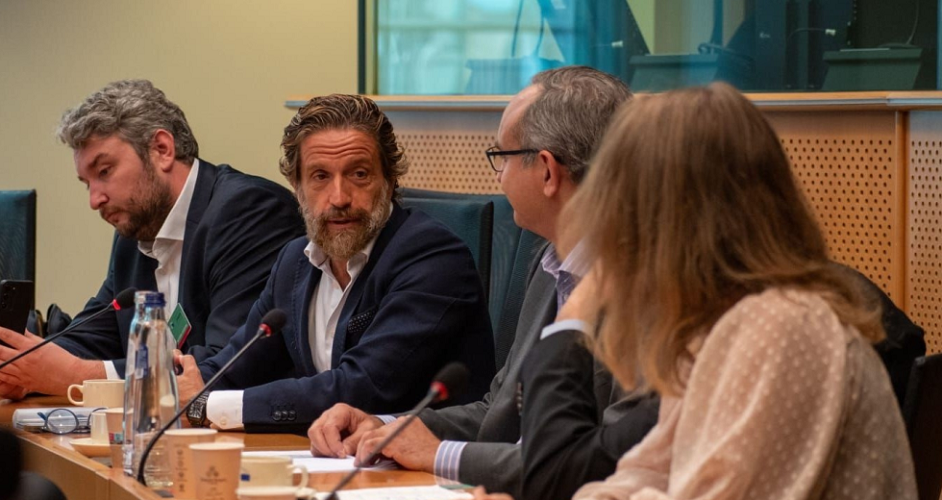These weeks, the Euro 7 regulation has taken center stage in the media spotlight.
The European Council has adopted its position on the Regulation for the homologation of motor vehicles, as well as independent technical units, systems, and components.
This pertains to their emissions and battery durability, commonly referred to as Euro 7.
The new proposal, which for the first time includes passenger cars, vans, and heavy vehicles in a single legal act, aims to establish more suitable standards for vehicle emissions and further reduce air pollutant emissions from road transport.
Different working groups continue their efforts to shape the fate of the regulation.
Summoned by the Spanish Confederation of Service Station Entrepreneurs (CEEES) at the Parliament headquarters, MEPs and industry leaders discussed the industry’s future and the necessary steps to be taken.
In this context, Gerardo Pérez Giménez, President of the Alliance of European Car Dealers and Repairers (AECDR), exclusively discusses with Mobility Portal Europe one of the latest meetings convened in Brussels.
“We see that a window has opened to rationalize the use of electric vehicles, so delaying Euro 7 is crucial for the end consumer,” asserts Pérez Giménez.
From his perspective, this will allow users to gradually embrace the new mobility at a “more suitable” pace.
Thus, the timelines are at the heart of the analysis by the President of the European dealership association.
“Parliamentarians have realized that we need to slow down in the environmental transition we are undergoing,” he acknowledges in this regard.
The Council’s position on Euro 7 strikes a balance today between vehicle emission requirements and additional investments for the industry.
All of this comes at a time when European car manufacturers are undergoing a transformation towards the production of zero-emission vehicles.
The overall orientation maintains the existing emission limits and testing conditions for light vehicles.
In light of this point, Gerardo Pérez Giménez admits, “We are working to make the position on zero emissions unmovable, but taking technological variations into account.”

This speech opens up possibilities for the incorporation of other types of propulsion models, such as e-fuels.
However, this is not the first time that all 27 have considered them.
During the parliamentary debate on regulations for the end of fossil fuel car sales throughout the bloc starting in 2035, they have managed to carve out a comfortable place.
Despite this, nothing is 100% settled, so there are still steps to be taken and issues to be resolved regarding Euro 7.
“We still need to convince the members of the European Commission of the concept of technological neutrality,” concludes the President of AECDR.
But the sector’s faith remains high, so it is expected that what lies ahead will adhere to a “more rational” perspective and “address the needs of customers.”
Euro 7: The 27 lower climate ambition and request a delay in its implementation
Euro 7 sets limits for emissions other than exhaust emissions, such as brake and tire particles.
Additionally, it encompasses minimum performance requirements for battery durability in electric vehicles and imposes stricter standards for vehicle lifespan.
Council Mandate and Euro 7
The Council suggests a series of practical changes to the Commission’s proposal, taking into account both environmental and health objectives. Among other things:
- The Council’s position maintains the existing test conditions and emission limits (as set out in Euro 6) for M1 and N1 vehicles (passenger cars and private vans).
- For M2 and M3 vehicles (buses and coaches) and N2 and N3 vehicles (heavy-duty commercial vehicles), emission limits are lowered, and minor adjustments are made to the testing conditions compared to Euro 6/VI standards.
- The Council’s text strengthens the harmonization of emission limits for particles from brakes and tire abrasion with international standards adopted by the United Nations Economic Commission for Europe (UNECE).
- It takes into account the new zero CO2 emissions target proposed for urban buses.
- Clear deadlines are also established for the adoption of implementing acts (by the Commission) to provide clarity and legal certainty to economic operators.
The agreed overall orientation formalizes the Council’s negotiating position.
It provides the Council Presidency with a mandate to negotiate with the European Parliament, which will begin as soon as the Parliament adopts its position.








